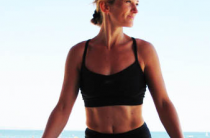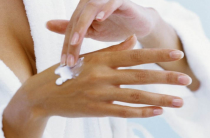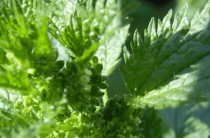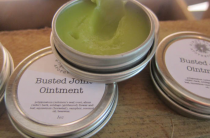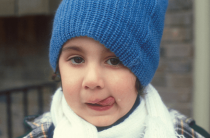Against the backdrop of a poor environmental situation in the country, and in the world as a whole, the immune system of people is significantly weakened. First of all, our liver suffers. Violations in its work lead to a significant accumulation of toxic substances in the body, which cannot pass without a trace for human health. Multiple allergic reactions occur. One of the first manifestations can be considered urticaria. It is not safe because it often flows into acute and even chronic forms.
Manifestations of allergic urticaria
Urticaria occurs in the form of a small rash of red or pink color. It often looks like pimples, and at the initial stage does not cause itching and burning. Therefore, many do not pay the necessary attention, hoping that over time it will pass by itself. Gradually, the spots increase in size and can reach up to 12-13 centimeters. There is also a merger of several pimples into one large edema.
In acute allergic urticaria, severe itching and burning of the integument appear. In this case, the symptoms are rapidly developing. Puffiness of the skin occurs within minutes after contact with the allergen. Usually, after the cessation of contact with the allergen, the symptoms disappear. If the spots persist and do not subside for several weeks, it is safe to say that there is a chronic form of allergic urticaria. Other accompanying signs are also noted:
| Pain | Heat | eczema |
| Appearance of watery blisters | Ulcerative formations | Sleep disorders |
Causes of allergic urticaria
Allergic urticaria occurs against the background of multiple irritants. From the name itself, it becomes clear that the culprit is an allergy. If the hives are due to a food allergy, the following foods are the culprits:
| Fish | cow milk | Bakery products | nuts |
| Potatoes, tomatoes | Flavoring additives | Eggs | preservatives |
Dyes, which are used in almost all products, and especially in semi-finished products, are very harmful to the human body. Eating fruits, vegetables, and citrus fruits out of season is not safe either. Allergic urticaria, especially in children, often occurs due to the use of certain medications. These include antibiotics, drugs to normalize the work of the heart, the use of hormones. Vitamins can also cause skin rashes. Therefore, before prescribing medications for yourself, it is imperative to consult with doctors in order to avoid sad consequences.

Among the reasons, it is worth mentioning such a disease as hay fever. This is the most "popular" type of allergy, which is often found among residents of large cities. Hay fever develops due to contact with the mucous membranes of pollen, wind-pollinated plants. Trees begin their flowering already in mid-March, and everything ends with the color of weeds in September. People who are aware of their predisposition to this type of disease need to know the flowering periods in order to avoid or minimize manifestations, including allergic urticaria:
| End of March-May | Apple tree, maple, elm, birch, alder, poplar, oak, hazel. |
| June July | Oats, wheatgrass, wheat, barley, rye, timothy. |
| July-September | Ambrosia, plantain, quinoa, sorrel, wormwood, nettle. |
Swelling and rashes on the body can be caused by pets and household dust. Very rarely, urticaria occurs due to cold allergies. Probably, each of us at least once experienced hives after exposure to direct sunlight on the skin. Such symptoms are considered normal and for an absolutely healthy person. But if it does not go away for at least a day, we can talk about an allergic manifestation.
The risk zone includes women during pregnancy, and children. Their body is most vulnerable to various stimuli. People with a genetic predisposition and viral or infectious diseases are at risk. The patient needs to improve the functioning of the liver.
Treatment
Any allergic disease should only be under the strict supervision of a doctor. Before prescribing medications, it is necessary to conduct a complete examination and pass the required tests. After all, allergic urticaria and urticaria of any other genesis are treated in completely different ways. In this case, antihistamines, ointments and creams are prescribed. After all, it is important not only to remove the manifestations of the rash, but to get rid of the disease from the inside. The condition for successfully getting rid of the disease is the complete exclusion of any contact with the allergen.
In medicine, they often began to resort to immunotherapy. Its essence lies in the systematic introduction of very small doses of the allergen, so that the body gets used to it, and the immune system begins to produce antibodies. The disadvantage is its duration of treatment (about a year), and periodic stay in the hospital, since injections are carried out only by a doctor in a hospital.
Among antihistamines, I distinguish three of their generations. The least number of contraindications is the last of them. But because of its strength of action, it is not attributed to all patients, but depending on the course and neglect of the disease. Let's take a look at some of them:
| Loratadine | An excellent drug for the treatment of allergic urticaria of acute and chronic forms. It is prescribed for hay fever, food allergies, dermatitis. Children are allowed from the age of two. Not recommended for women in pregnancy and lactation. |
| Erius | It has a release form in the form of tablets and syrup, which allows it to be used to treat urticaria in children . Eliminates any skin manifestations of allergies and Quincke's edema. May cause dizziness, nausea or vomiting. |
| Suprastin | The drug belongs to the first generation. Can be used even by infants. If the indicated dosages are not observed, it causes sedation, tachycardia, impaired functioning of the liver and gastrointestinal tract. |
| Claritin | It has two forms of release: syrup and tablets. It blocks the release of histamine from cells, which helps to relieve any allergic manifestations. The drug does not affect the functioning of the nervous system. When treating pregnant women and children, a doctor's consultation is required. |
| Telfast | It is prescribed for the following allergic manifestations: rhinitis, conjunctivitis, dermatitis, urticaria and agnoedema. The effect occurs within two hours and lasts at least a day. It can become a provocateur of increased fatigue and drowsiness. |
| Zyrtec | The drug is available both in tablets and in drops for internal use. Has an antipruritic effect. Eliminates skin inflammation and allergic manifestations of the respiratory system. Used by children from six months of age. |
| Tavegil | An effective fast-acting remedy for any manifestations of allergies. Adverse reactions are quite rare. Used by children from the age of six. During pregnancy, constant monitoring by a doctor is necessary. |
To relieve allergic urticaria in the shortest possible period of time, ointments and creams are used. Depending on the nature of its manifestation, hormonal, non-hormonal and moisturizing preparations are selected. In the acute form, hormonal are used. They are considered the most effective, but at the same time, not entirely safe. Although the amount of hormones that make up their composition is small, the hormonal background of the patient's body can still be disturbed. Such drugs are prescribed for a short time, so they are not suitable for the treatment of chronic urticaria. These include the following:
| Lorinden S | Lorinden | Soderm | Flucinar |
| Fluorocort | Elocom | Celestoderm | Advantan |
If the skin begins to peel off, use a simple oil-based baby cream. Nevertheless, it is safer to use non-hormonal ointments, which are allowed for both small children and pregnant women. Most of them have a cooling effect, which relieves the patient of itching and burning in minimal time intervals. These drugs include:
| Fenistil gel | Bepanthen | Skin Cap | Gistan |
| Wundehill | Desitin | Elidel | La Cree |
Treatment of hives due to food allergies
Allergic urticaria of this type is treated not only with antihistamines, but also with a mandatory hypoallergenic diet. First of all, the allergen product is excluded from the diet. The following are products that are strictly prohibited or acceptable for consumption in small quantities:
| Strictly prohibited |
|
| May be used with extreme caution |
|
| It is allowed to use |
|
Based on the permitted foodstuffs, try to cook meat dishes in a steamed or baked form. It is useful to consume vegetable broths daily. More often cook cabbage salads with the addition of fresh cucumber. You can season them with plain olive oil and sesame or flax seeds (if you are not allergic to them). Remember that the menu should be varied and prepared only from fresh products.
Folk methods of treatment
In some cases, the treatment of urticaria with the help of traditional medicine brings a more noticeable effect than traditional methods of treatment. So, to get rid of toxins, it is necessary to prepare a decoction of celandine. A small amount of this herb should be poured with water and boiled for several minutes. Let the broth cool down a little and just infuse. Consume throughout the day.
Allergic urticaria is cured with nettle. Lotions are prepared from this plant. For about 0.5 liters of water, you need a few pinches of grass, which are brought to a boil and left on fire for three minutes. After removing from the stove, let it brew for an hour. It is allowed to use an unlimited number of times, applying to damaged skin. For internal use, nettle is prepared as follows: for 0.5 liters of boiling water, you need about 100 grams of dried or fresh grass. Wrapped in a towel, leave for half an hour. Then just strain the decoction and consume about 100 grams up to five times a day, regardless of meals.
Bean decoctions are used to tone the skin and promote its rapid regeneration. To do this, the beans are boiled in water for about an hour, in a ratio of 2:10, and the liquid is consumed orally several times a day. Well relieve urticaria chamomile decoctions with the addition of a string. Medicinal baths are also prepared from these herbs. Coniferous additions are useful for baths. If it is not possible to use natural ingredients, it is allowed to drip essential oils of fir, spruce, lemon balm, mint and eucalyptus.
For external use, ointments are prepared on the basis of improvised means. For this, a mixture of rice starch and glycerin, or aloe juice and petroleum jelly, is suitable. The ingredients are taken in the same amount. An excellent ointment is obtained from hives from honey, water and a few drops of lemon juice. It is useful to lubricate the skin with a cut leaf of aloe. Lotions are used from brewing green tea and chamomile. This will help relieve redness and swelling of the skin.
Prevention measures
The first and main rule of prevention is diet, especially for a pregnant woman and a nursing mother. It is required to exclude any possible allergens, such as carpets, soft toys, pets, low-quality food, pollen and others. To prevent the appearance of mold and mildew in the house, regularly ventilate the rooms. Observe the following instructions:
- Regular wet cleaning;
- Proper fractional nutrition;
- Personal hygiene;
- Prevent hypothermia and increase in body temperature;
- Regular sports;
- Getting rid of bad habits (alcohol, smoking).

